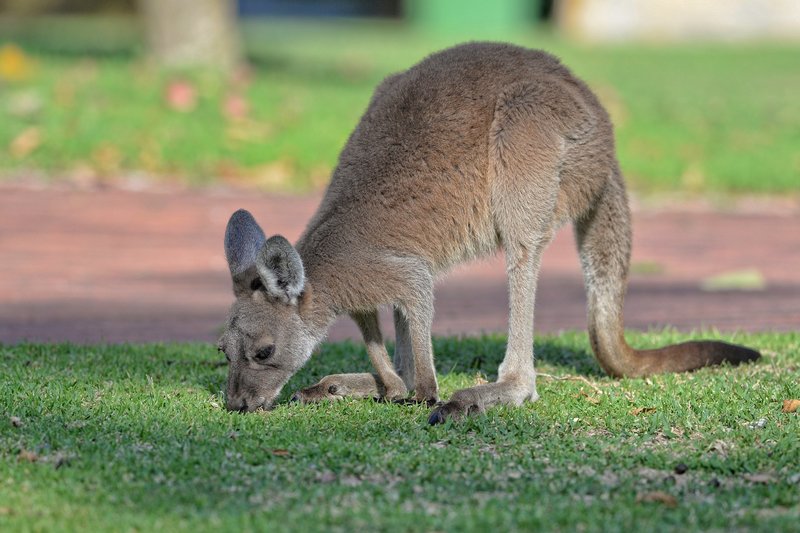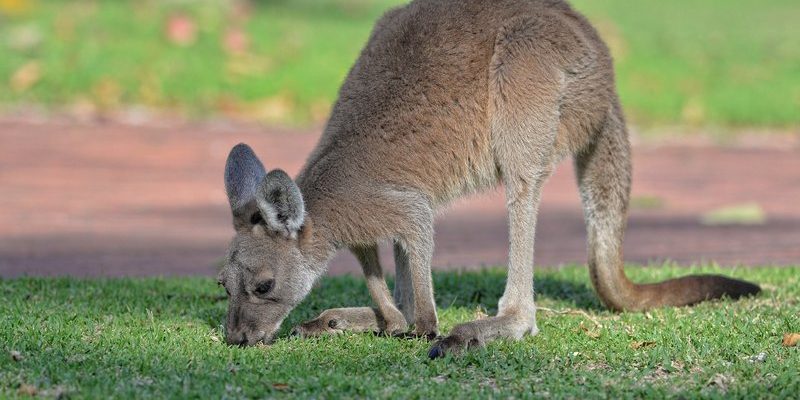
Just like a dog learns tricks or a child figures out how to build a tower from blocks, kangaroos show cognitive abilities that reflect their adaptation to life in the wild. They may not be writing essays or solving puzzles, but their problem-solving skills and social behaviors reveal a lot about their intelligence. Let’s dive into the cognitive abilities and behaviors of the Western Grey Kangaroo and see what makes them tick.
Understanding the Western Grey Kangaroo
The Western Grey Kangaroo is a fascinating marsupial found primarily in southwestern Australia. They’re a bit smaller than their Eastern counterparts, but don’t let their size fool you—these kangaroos are incredibly adaptable. They can thrive in a range of habitats, from woodlands to grasslands.
You might be wondering how they manage such versatility. Well, it’s all about their cognitive abilities. Western Grey Kangaroos can learn from their experiences, recognize their surroundings, and even remember food sources over time. This adaptability gives them a significant advantage in the wild.
In social settings, these kangaroos often form groups, or mobs, where they can communicate and support one another. By observing other kangaroos, they learn behaviors that help them survive. It’s almost like they share tips on navigating their environment, much like friends do when they swap stories about life’s challenges.
Problem-Solving Skills
When it comes to problem-solving, Western Grey Kangaroos demonstrate some impressive skills. They often face challenges when finding food, especially during dry spells. To tackle this, they use their intelligence to seek out new sources of nourishment. They might remember where they’ve found food in the past, tracking paths they’ve taken before.
This ability to solve problems can also be seen in their interactions with human environments. For example, they have learned to navigate urban areas and can even figure out how to unlock certain food sources, like garden vegetables or trash cans. It’s a bit like watching a clever child find a way to reach the cookie jar—they learn through trial and error.
Interestingly, studies have shown that kangaroos can engage in tool use. In some instances, they’ve been observed using sticks to scratch themselves or nudging objects to reach food. This showcases not only their intelligence but also their capacity to adapt and innovate based on their needs.
Social Behavior and Communication
Western Grey Kangaroos are not just solitary creatures; they thrive in social groups. Their social structure plays a massive role in their cognitive development. Living in groups means they have to communicate effectively with each other. They use a series of vocalizations, tail movements, and body language to convey messages.
Picture a mob of kangaroos—one might thump its foot to signal danger; others stop what they’re doing to pay attention. This form of communication ensures that everyone is aware of potential threats, much like how friends might warn each other about an approaching storm.
Moreover, they show empathy and social bonding. When one kangaroo is distressed, others in the group may come closer, showing signs of concern. This emotional intelligence is vital for maintaining harmony within their mobs and suggests a deeper level of awareness of their social interactions.
The Role of Play in Cognitive Development
Play is a crucial part of the learning process for many animals, and Western Grey Kangaroos are no exception. Young kangaroos, or joeys, engage in play that mimics adult behaviors, such as hopping and wrestling. This playful practice is vital for developing their coordination and social skills.
Moreover, playtime helps them understand boundaries and social cues. Just like puppies learn to play nice, kangaroo joeys learn how to interact with their peers, which is important for their overall growth. Watching them bounce around and engage in mock fights is not only adorable but also essential for their cognitive development.
Many researchers believe that this play is a sign of intelligence. By observing and interacting with one another, they learn about their environment, improve their physical abilities, and develop social bonds—all of which are essential for survival.
Learning Through Observation
One of the standout traits of Western Grey Kangaroos is their ability to learn through observation. This means they can pick up skills by watching others rather than having to try everything themselves. For example, if a member of the mob discovers a new food source, others are likely to follow and learn from that experience.
This type of learning is especially valuable in the wild. It helps young kangaroos avoid dangers and find food without experiencing the risks firsthand. It’s like how kids learn to ride a bike by watching their friends—they see what works and what doesn’t.
Studies have suggested that this observational learning can lead to more effective foraging strategies within groups. The more they watch, the more they adapt their behaviors to suit their environment. This intelligence reflects their flexibility and ability to adapt to changing conditions.
Conservation and Future Challenges
Despite their impressive cognitive abilities, Western Grey Kangaroos face challenges in the wild due to habitat loss and climate change. As temperatures rise and their environments shift, these kangaroos must adapt not just in behavior but in their cognitive strategies as well. It’s a pressing issue that highlights just how crucial it is to understand their intelligence and adaptability.
Conservation efforts aim to protect their habitats and ensure that they have the resources they need to thrive. This means not only preserving their natural environment but also understanding their social dynamics and cognitive abilities. The more we know about their behavior, the better equipped we are to help them survive in an ever-changing world.
A healthy population of Western Grey Kangaroos is not just essential for their species but also for the ecosystem they inhabit. They play a vital role in their environment by helping with seed dispersal and maintaining the balance of their habitats.
The Western Grey Kangaroo is more than just a symbol of Australia; it’s a testament to the wonders of animal intelligence. From their problem-solving skills to social interactions, these kangaroos showcase a range of cognitive abilities that help them thrive in the wild. They may not write essays or solve complex problems, but their adaptability, communication skills, and capacity for empathy paint a clear picture of their intelligence.
Understanding these amazing creatures not only enriches our knowledge of wildlife but also emphasizes the importance of conservation efforts. By working to protect their habitats and promote awareness of their needs, we can ensure that these intelligent kangaroos continue to hop through the Australian landscape for generations to come.

